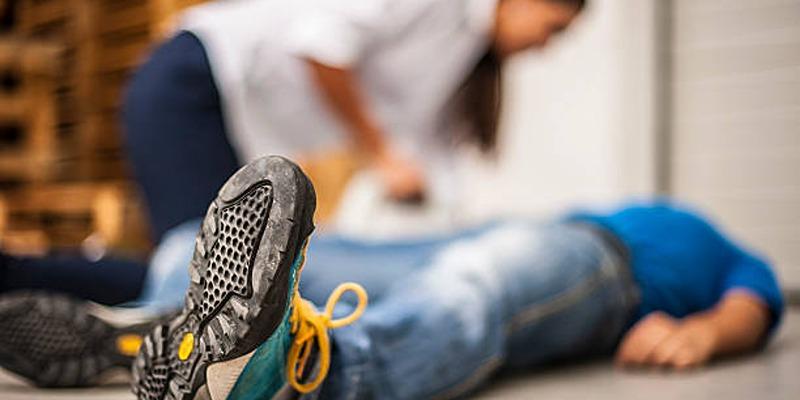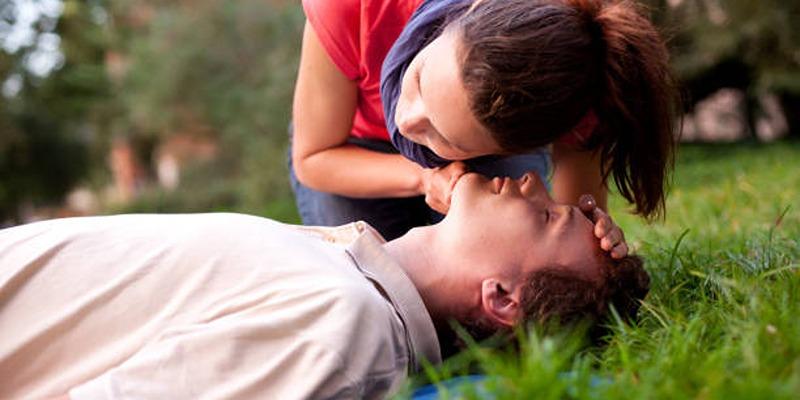What Happens When You Faint? A Comprehensive Guide
Syncope (fainting) means that you suddenly become unconscious due to your brain not getting enough blood. This could happen to anyone without warning. Fainting isn’t dangerous in itself, but can sometimes point to an underlying condition that needs medical care. Knowing why fainting happens and what’s happening to your body when you faint can help you stay calm and act accordingly.
What Causes Fainting?
 Fainting happens when the brain does not get enough oxygen-rich blood. There are many number of reasons why this lack of oxygen can happen, but determining what’s caused it is crucial.
Fainting happens when the brain does not get enough oxygen-rich blood. There are many number of reasons why this lack of oxygen can happen, but determining what’s caused it is crucial.
Vasovagal Syncope
Vasovagal syncope, which is the most common type of fainting, is when the body overreacts to triggers. But these triggers can be anything from intense emotional stress, fear, pain, or the sight of blood. This overreaction causes blood pressure and heart rate to suddenly drop and the brain's blood supply to lower.
Orthostatic Hypotension
When you get up too quickly, this can be orthostatic hypotension, where your blood pressure drops too fast suddenly. You are more likely to have this condition if you are dehydrated, have low blood volume, or are using certain medicines that affect your blood pressure.
Dehydration
Dehydration dramatically lowers blood volume, making it that much harder for the heart to pump sufficient blood to the brain. This is common during hot weather and with vigorous exercise, or when the fluid intake is inadequate.
Heart-Related Issues
Fainting occurs if blood does not reach the brain because it is disrupted or blocked by heart trouble, like an arrhythmia, a blocked artery, or heart valve disease. Conditions that need to be ruled out by medical evaluation to exclude serious risks are these conditions.
Low Blood Sugar
Skipping meals or prolonged fasting can cause low blood sugar, leading to fainting. The brain relies heavily on glucose for energy, and a sudden drop in blood sugar can result in dizziness, weakness, and loss of consciousness.
Environmental Factors
Heat exhaustion, lack of ventilation, and overcrowded spaces can impair the body's ability to regulate its temperature, increasing the risk of fainting.
What Happens During Fainting?
When you faint, your body experiences a sequence of physiological changes, all aimed at restoring blood flow and oxygen to the brain.
Blood Pressure Drop
A sudden drop in blood pressure is one of the primary causes of fainting. This happens when blood vessels dilate too much or the heart fails to pump efficiently.
Reduced Oxygen to the Brain
As blood pressure falls, the amount of oxygen delivered to the brain decreases. The brain temporarily shuts down non-essential functions to conserve energy, leading to a loss of consciousness.
Automatic Recovery
In most cases, fainting is self-limiting. Lying flat after fainting helps restore blood flow to the brain, and consciousness typically returns within a minute or two.
Recognizing the Warning Signs of Fainting
Fainting is often preceded by warning signs, which can help you or others take preventive action.
Lightheadedness
Feeling dizzy or unsteady is a common sign of fainting. This may come on suddenly and feel like the room is spinning or like you’re about to lose balance. It happens when the brain doesn’t get enough blood or oxygen.
Nausea
A sudden feeling of queasiness or an upset stomach often accompanies fainting. Nausea can be mild or intense and may include the urge to vomit as the body reacts to changes in blood pressure or circulation.
Sweating
Cold sweats, even in cool environments, can signal trouble with blood circulation. You may feel clammy or notice sweat on your forehead. This is often the body’s response to a drop in blood pressure or stress.
Blurred Vision
Before fainting, your vision may blur, dim, or narrow. Some people see black spots or feel their sight fading. This happens due to reduced blood flow affecting the eyes.
Weakness and Paleness
Extreme fatigue or weakness, along with pale skin, is another common sign of fainting. Muscles may feel weak, and others might notice you looking pale as blood shifts to vital organs.
What to Do If You Feel Faint
Recognizing the early signs of fainting can help you take immediate steps to prevent it.
- Lie Down Immediately- If you feel faint, lie down on your back and elevate your legs. This position helps increase blood flow to the brain and can prevent loss of consciousness.
- Sit with Your Head Between Your Knees- If lying down isn't possible, sit in a chair and lean forward, placing your head between your knees. This posture can also help improve blood flow to the brain.
- Stay Hydrated- If dehydration is the cause, drink water or an electrolyte-replenishing beverage to stabilize your blood volume.
How to Help Someone Who Has Fainted
Witnessing someone faint can be alarming, but knowing how to respond can make a significant difference.
Ensure Their Safety
If someone faints, stay calm and act quickly to keep them safe. Gently lay them flat on their back and lift their legs—this simple move helps send blood back to their brain and gets them on the road to recovery.
Check for Breathing and Responsiveness
Confirm that the person is breathing and responsive. If they are not, call emergency services immediately and begin CPR if trained to do so.
Loosen Tight Clothing
Tight clothing, especially around the neck or chest, can restrict circulation. Loosening it can help the person recover more quickly.
Do Not Offer Food or Drink Immediately
Wait until the person is fully conscious and alert before offering anything to eat or drink, as their body may not be ready to handle it.
When to Seek Medical Attention
While fainting is often harmless, certain situations require medical evaluation:
- The person does not regain consciousness within a few minutes.
- Fainting occurs without an obvious trigger.
- There are accompanying symptoms such as chest pain, shortness of breath, or irregular heartbeat.
- The person sustained an injury during the fall.
Preventing Fainting Episodes
 Taking proactive measures can help minimize the risk of fainting, especially if you are prone to it.
Taking proactive measures can help minimize the risk of fainting, especially if you are prone to it.
1. Stay Hydrated
Drink plenty of water throughout the day to keep your body working properly. This is especially important in hot weather or during physical activity when you lose fluids faster. Staying hydrated helps maintain blood volume and prevents dizziness or fatigue.
2. Eat Regularly
Keep your energy stable by eating balanced meals regularly. Include protein, healthy fats, and complex carbs to maintain steady blood sugar. Healthy snacks can help avoid energy dips that may lower blood pressure.
3. Avoid Sudden Movements
When standing up, move slowly to avoid a sudden drop in blood pressure (orthostatic hypotension), which can cause dizziness or fainting. Give your body time to adjust to the new position.
Conclusion
Fainting is a temporary loss of consciousness that usually resolves quickly without lasting harm. By understanding the causes and symptoms, you can take effective steps to manage and prevent fainting episodes. If fainting occurs frequently or is accompanied by concerning symptoms, consult a healthcare professional to determine the underlying cause and receive appropriate treatment. Being prepared and informed can make all the difference in handling fainting confidently and safely.












